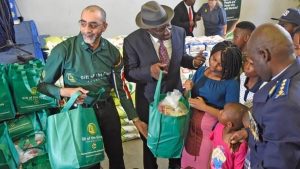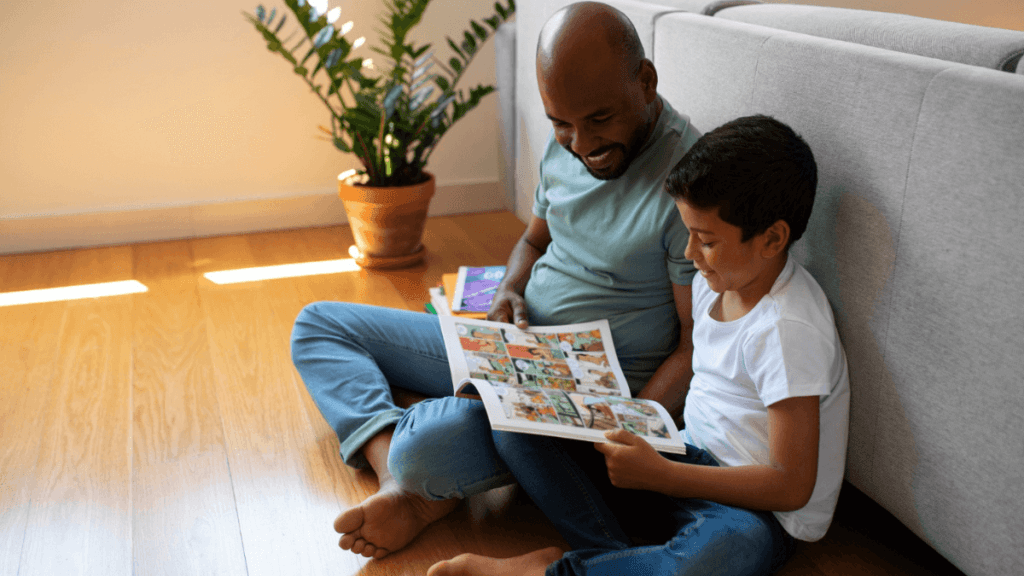Reading is an essential skill that opens doors to many opportunities in life. Access to formal learning resources like books and educational toys might be limited. But don’t worry—learning to read doesn’t always need expensive tools or fancy materials. You can start teaching reading right at home using simple, everyday items.
Here are 10 household items you probably already have that can help your child learn to read, plus easy ways to use them.
1. Newspapers and Magazines
Newspapers and magazines are full of words and pictures that help kids connect reading with real life.
How to use: Cut out pictures and headlines and ask your child to match words with the images.
Encourage them to read headlines aloud or find simple words they recognize.
This builds vocabulary and makes reading fun and practical.
2. Food Packaging
From cereal boxes to spice packets, food packaging is everywhere in the kitchen.
How to use: Let your child read labels while cooking or grocery shopping.
Ask them to find and read words like “sugar,” “salt,” or “milk.”
This activity builds sight word recognition and helps them understand that reading is useful.
3. Chalkboard or Whiteboard
You don’t need to buy a fancy whiteboard—any flat surface or even cardboard can work!
How to use: Write simple words or letters and ask your child to copy them.
Play games like “write your name” or “spell the word.”
This hands-on activity supports writing and reading together.
4. Magnetic Letters on the Fridge
Magnetic letters are often cheap and can be found at local markets or toy shops.
How to use: Arrange letters to make simple words like “cat,” “dog,” or “mom.”
Let your child rearrange the letters to form new words.
This makes learning letters and sounds interactive and playful.
5. Labels Around the House
Look at labels on doors, cupboards, or drawers (e.g., “bathroom,” “fridge,” “toys”).
How to use: Point to these words and say them out loud together.
Ask your child to find labels and read them.
This helps children recognize common words and connects words to their environment.
6. Old Calendars
Calendars have lots of words, numbers, and sometimes pictures.
How to use: Let your child read the days of the week and months of the year.
Use the calendar to talk about dates and events to boost understanding of time-related words.
This introduces more complex reading in a familiar setting.
7. Recipe Cards or Printed Recipes
Cooking is a great way to learn words and follow instructions.
How to use: Read simple recipes together and follow each step.
Point out verbs like “mix,” “pour,” or “cook.”
This builds comprehension and the ability to follow written instructions.
8. Storybooks and Comic Books
If you have any storybooks or comic books at home, these are excellent for reading practice.
How to use: Read aloud to your child and encourage them to read along.
Ask questions about the story to develop understanding.
Comics with pictures and speech bubbles can be especially engaging.
9. Clothing Tags
Clothing tags often have brand names and care instructions.
How to use: Let your child read simple words like “cotton,” “wash,” or “dry.”
This familiarizes them with different word types and helps with vocabulary.
10. Household Bills or Letters
These might not seem like fun reading materials, but they contain useful words and numbers.
How to use: Read the names and addresses together.
Point out numbers and important words like “due date” or “amount.”
This makes reading practical and relevant to everyday life.
Tips to Make Reading Fun and Easy
Make it daily: Even 5-10 minutes a day using these items can build reading skills.
Praise efforts: Celebrate every small success to encourage your child.
Use pictures: Help your child guess words from pictures or context.
Be patient: Learning to read is a journey — go at your child’s pace.
Learn More: How to Teach Your Child to Read at Home
Why Teaching Reading at Home Matters
In many South African communities, access to schools and libraries can be challenging. Teaching reading at home with what you have ensures your child gets a head start. It improves their confidence and helps them do better in school and life.
Start today—grab a cereal box, some magazines, or just walk around your house pointing out words. You’ll be surprised at how much your child can learn with everyday things.










